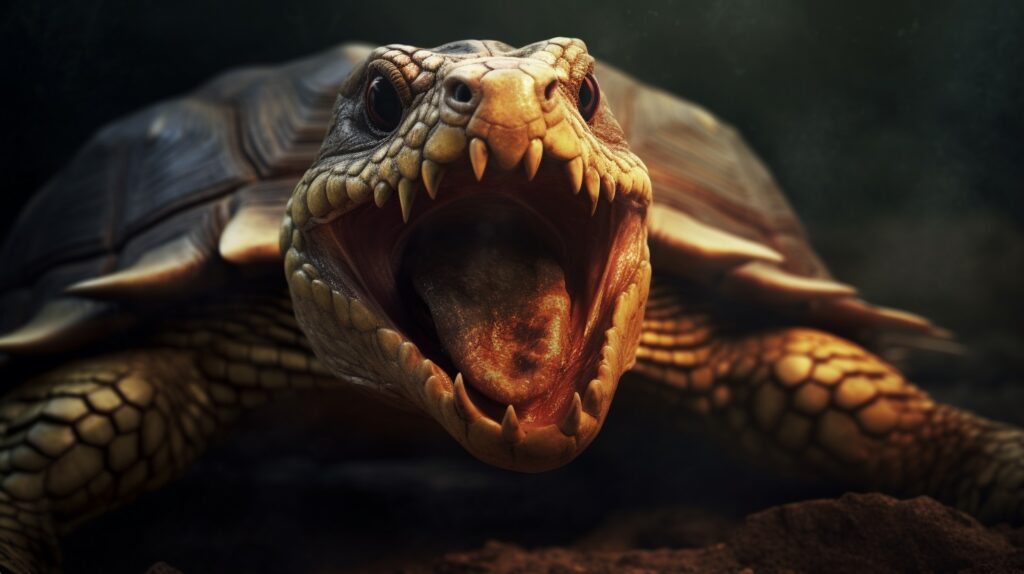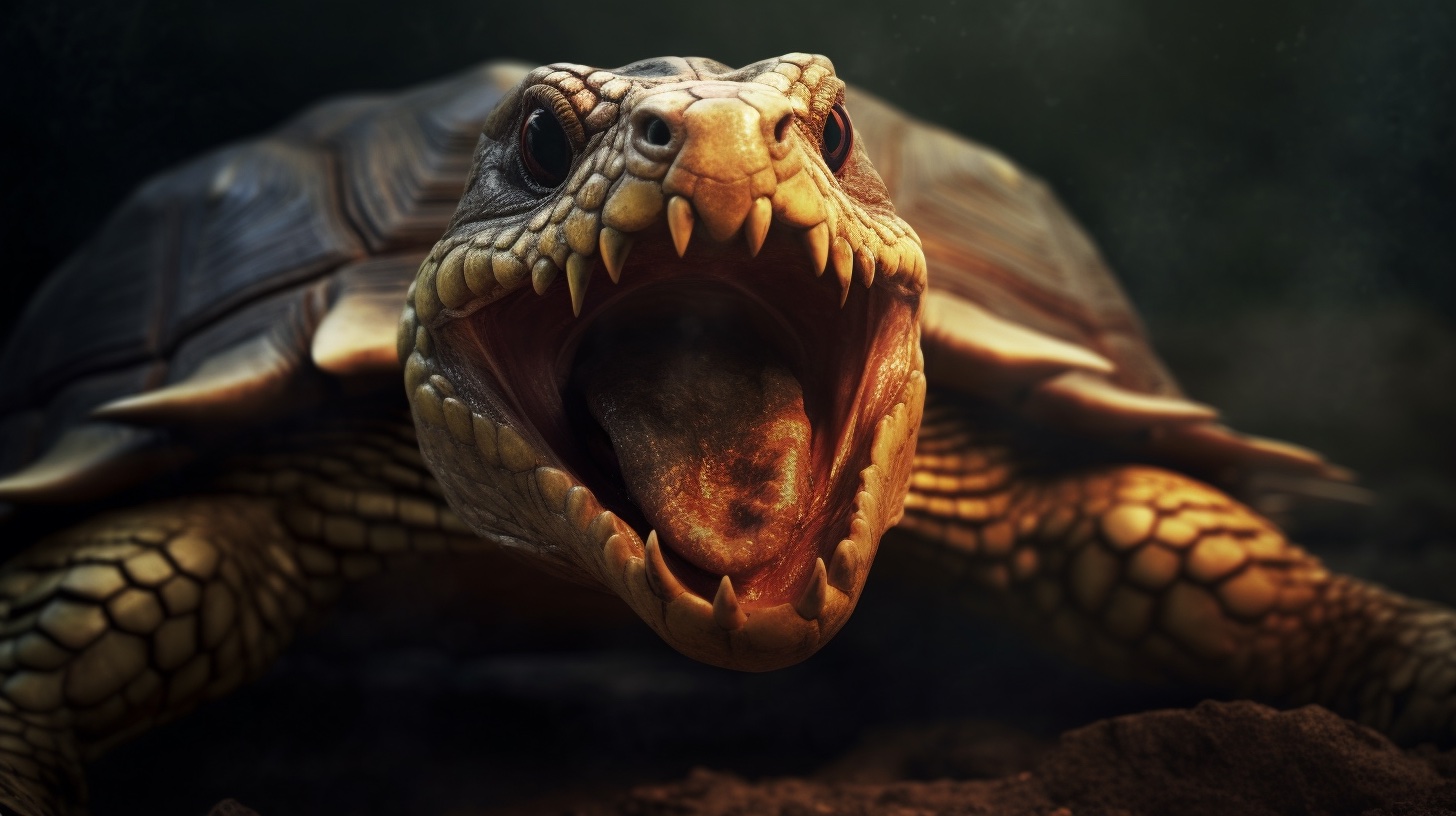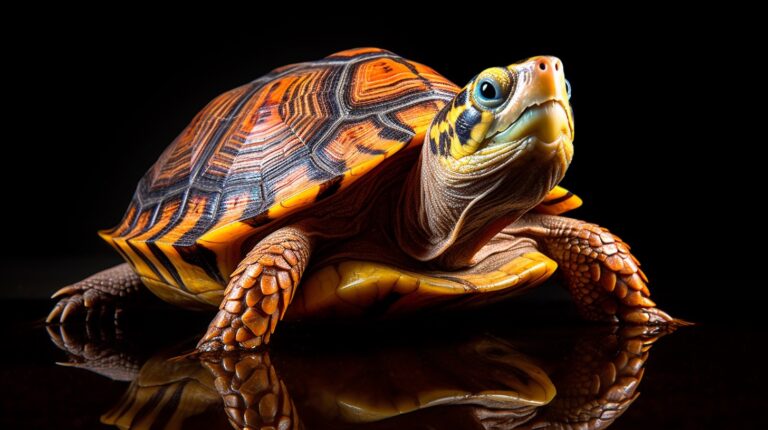Do Turtles Have Teeth? Fun Facts You Need to Know
Turtles, including the leatherback, russian tortoise, and footed tortoise, are fascinating creatures that have been around for millions of years. Their unique anatomy and behavior have always piqued the curiosity of many people, especially when it comes to their mouths and teeth. Understanding the anatomy of turtles can help answer the question: do turtles have teeth?
The short answer is yes, footed tortoises and Russian tortoises do have teeth. However, their teeth are not like ours or other animals’. Instead, they have pointed beaks made up of strong keratin, which is the same material that makes up our hair and nails.
If you’re wondering why footed tortoises don’t have regular teeth like us, it’s because they don’t need them. Footed tortoises are herbivores or omnivores, meaning they eat plants or both plants and animals. Their mouths are perfectly adapted to their diet and allow them to bite off pieces of food without chewing. They don’t need to visit a dentist for teeth cleaning either!

Although all types of turtles may not require regular dental check-ups like humans do, a visit to a turtle dentist may reveal more about their oral health. Turtle dentists use a spadental chart to identify different types of turtle teeth and diagnose any potential issues with their oral health, including those of carnivorous turtles, herbivorous turtles, freshwater turtles, and loggerhead turtles.
It’s important to note that tortoises, like turtles, also have different types of mouths and bites depending on their diet and lifestyle. Not all species have the same type of beak or “teeth.” Just like humans need to visit the dentist regularly, it’s important for tortoises and turtles to receive proper dental care.
Types of Turtle Teeth: Snapping Turtles and Baby Turtles
Sharp Spadental Teeth of Common Snapping Turtles
The common snapping turtle is one of the most well-known freshwater turtles, and it’s also one of the most aggressive. These turtles have sharp, pointy spadental teeth that can easily bite through small mammals like mice and snakes, making them a perfect meal for the turtles. This article also mentions that they have powerful jaws to grab prey and their tongues are covered in spikes to ensure that their meal doesn’t escape.
Interestingly, snapping turtles don’t actually have that many teeth – they typically only have around 40 to 60 spadental teeth. However, these teeth are incredibly sharp and effective at tearing flesh. In fact, some studies have shown that a single bite from a large snapping turtle can generate more force than a human bite. Additionally, their tongues are covered in small spikes which aid in grasping their meal.
While snapping turtles are certainly impressive predators, they’re not invincible. In fact, humans are one of their biggest threats due to habitat destruction and over-harvesting for food or pets. It’s important to respect these animals and give them plenty of space if you encounter them in the wild. However, if you’re looking for a meal recommendation, check out the reviews for Spadental from their satisfied patients.
Egg Teeth of Baby Turtles
Baby turtles are adorable little creatures with tiny shells and even tinier teeth called egg teeth. These specialized structures are used by hatchlings to break out of their shells when they’re ready to emerge into the world. However, some spadental experts advise that it’s important to keep an eye on the growth of their tongues, as they can cause problems if they become too large. Additionally, reviews from experienced turtle owners can provide valuable insights into the care and keeping of these lovable pets.
Egg teeth aren’t true teeth like those found in adult turtles – instead, they’re temporary structures that disappear shortly after hatching. Once baby turtles break free from their eggs using these special teeth, they begin to develop more complex mouthparts, including spadental, as they grow older.
Softshell Turtles’ Short Beaks
Unlike snapping turtles or box turtles, softshell turtles don’t actually have any real teeth at all! Instead, these aquatic reptiles have short spadental beaks that allow them to crush prey items like snails or crayfish.
Despite lacking traditional teeth structures, softshell turtles still pack a serious bite thanks to their strong jaw muscles. If you ever encounter one of these animals in the wild, it’s best to keep your distance and avoid disturbing them. However, it’s worth noting that softshell turtles have a unique dental structure called spadental that helps them crush and grind their food.
Box Turtles’ Tomial Teeth
Box turtles are a type of terrestrial turtle that can be found throughout much of the United States. These animals have a unique kind of tooth called a tomial tooth that helps them crush their food.
Tomial teeth are located on the inside edge of the upper jaw and are used to break apart prey items like snails or worms. Interestingly, box turtles have a very strong bite force relative to their size – they can easily crack open tough shells or other hard objects with their powerful jaws.
Do Tortoises Bite or Chew Their Food?
Tortoises are fascinating creatures that have been around for millions of years. They are known for their slow and steady pace, but what about their eating habits? Do they bite or chew their food? Let’s explore the different types of tortoises and turtles and how they consume their meals.
Herbivorous Tortoises: No Teeth, No Problem
Herbivorous tortoises, such as the Galapagos tortoise, do not have teeth to bite or chew their food. Instead, they use their sharp beaks to cut and tear their food into smaller pieces. This allows them to easily consume vegetation such as grasses, leaves, and fruits. Because they lack teeth, herbivorous tortoises rely on a strong digestive system to break down tough plant material. However, carnivorous turtles like the leatherback turtle have sharp beaks that enable them to bite and tear apart their prey. There are many different turtle species with varying diets and feeding habits.
Carnivorous Tortoises: Sharp Beaks for Biting
Carnivorous tortoises like the African spurred tortoise have sharp beaks that allow them to bite their prey. However, unlike mammals who chew their food before swallowing it, carnivorous tortoises do not chew their food. Instead, they swallow it whole or in large chunks. Their powerful digestive system is able to break down bones and other hard materials. On the other hand, herbivorous turtles such as the box turtle have a different diet and do not use turtle bites to consume their food. There are many turtle species with varying diets and feeding habits.
Footed Tortoises: Crushing Power
Footed tortoises like the Russian tortoise are one of many turtle species that have a strong jaw capable of turtle bites, allowing them to crush hard foods such as seeds and nuts. While they may not have teeth like mammals do, footed tortoises and other carnivorous turtles are still able to consume a varied diet thanks to their powerful jaws. Box turtles are another example of a turtle species with a strong bite.
Herbivorous Turtles: Sharp Beaks Rule
Like herbivorous tortoises, herbivorous turtles also lack teeth but make up for it with sharp beaks that allow them to cut through vegetation with ease. Species such as the green sea turtle feed on seagrasses while box turtles consume a wide variety of fruits and vegetables.
Sea Turtles’ Mouths and the Power of Loggerhead Sea Turtle Bite
Powerful Bite of Loggerhead Sea Turtles
Loggerhead sea turtles are known for their powerful jaws and strong bite. Their bite force is one of the strongest among all sea turtles, with an average bite strength of 209 newtons. This power allows them to easily crush the shells of their prey, which includes hard-shelled animals such as crabs, clams, and mussels.
The loggerhead turtle is one of the carnivorous turtles with strong jaw muscles that are responsible for its powerful bite. These carnivorous turtles’ muscles can generate a lot of force when they close their mouths. The shape of the loggerhead’s beak also contributes to its biting power. It has a pointed beak that helps it grip and crush its prey.
Interestingly, the strength of a loggerhead turtle’s bite varies depending on its size. Larger turtles have stronger bites than smaller ones because they have more powerful jaw muscles. A study found that adult female loggerheads had stronger bites than males or juveniles.
Unique Mouth Structure of Leatherback Sea Turtles
Leatherback sea turtles have a unique mouth structure that sets them apart from other sea turtles. Instead of teeth, they have sharp-edged cusps in their throats that help them catch and swallow jellyfish, their primary food source.
Their throat structure is specially adapted to handle jellyfish tentacles without getting stung or clogged up by them. The cusps act like tiny hooks that grab onto the slippery body of the jellyfish and prevent it from slipping out of the turtle’s mouth.
Green Sea Turtles’ Sharp Beaks
Green sea turtles have sharp beaks that help them tear through seagrasses and algae, which make up most of their diet. Unlike loggerheads and leatherbacks, green sea turtles do not rely on crushing hard-shelled prey.
Their beaks, found in all turtle species including the box turtle, are made up of keratin, which is the same material found in human hair and nails. This makes them tough enough to handle abrasive seagrasses and algae, as well as withstand a turtle bite. The sharp edges of their beaks also help them slice through their food with ease.
How Toothless Turtles Eat: Baby Turtles’ One Tooth
Baby Turtles’ One Tooth: How Toothless Turtles Eat
Single Toothed Hatchlings
Baby turtles are fascinating creatures, and one of the most interesting things about them is their single tooth. Known as an egg tooth, this specialized structure helps hatchlings break out of their shells when they’re ready to emerge into the world.
The egg tooth is a temporary feature that falls off shortly after hatching. It’s located on the tip of the turtle’s snout and is used to crack open the shell from inside. Once it has served its purpose, it disappears, leaving baby turtles without any teeth.
Toothless but Not Helpless
Despite being toothless, baby turtles are far from helpless. They have sharp beaks that allow them to bite and tear food just like any other animal. In fact, many species of baby turtles are born with a fully functional digestive system and can eat right away.
Their diet varies depending on the species and habitat they live in. Some sea turtles feed exclusively on plants while others eat insects or small aquatic animals such as plankton or crustaceans. Box turtles also have a diverse diet, but they may occasionally bite when feeling threatened.
Sea Turtle Teeth?
While some adult turtle species do have teeth, sea turtles are not among them. Instead, they have serrated jaws that help them crush and grind food such as jellyfish or seagrass.
Sea turtles lay their eggs in sandy beaches around the world during nesting season. The hatchlings then make their way to the ocean where they spend most of their lives swimming through vast expanses of water.
The Complexity of Whether Turtles Have Teeth or Not
Turtles are fascinating animals that have been around for millions of years. They are known for their unique shells and slow movements, but there is a lot of complexity involved. In this section, we will explore the various aspects of whether turtles have teeth or not.
Most Reptiles Have Teeth
It is a fact that most reptiles have teeth, so it is reasonable to assume that turtles do too. However, the earliest known turtle ancestor, Odontochelys, had teeth only on its upper jaw. This discovery has led scientists to believe that turtles may have lost their teeth over time as they evolved.
Evolution of Turtle Teeth
Modern turtles have evolved to have a beak-like structure instead of teeth to support their herbivorous or carnivorous diets. Some species of turtles need to consume meat, while others can survive solely on plants. Despite not having teeth, turtles have a lot of adaptations inside their mouths to support their unique diets. For instance, some turtles such as the snapping turtle and alligator snapping turtle have sharp edges on their beaks which allow them to tear apart prey easily. Meanwhile, other species such as the green sea turtle and tortoise have ridges for grinding tough plant material.
Sea Turtles Don’t Have Teeth
While most land-dwelling turtles don’t have teeth anymore due to evolution over time; even some sea-dwelling ones do not possess them either! Sea turtles are primarily herbivores and feed mostly on seagrass and algae. Because these foods are soft enough for them to chew without requiring any additional help from sharp biting structures like human or animal incisors or molars in our case; they don’t need any dental equipment at all!
Recap and Final Thoughts on Turtle Teeth
Turtles are fascinating creatures that have been around for millions of years. They come in different shapes, sizes, and colors. One of the most intriguing aspects of turtles is their teeth, or lack thereof. In this post, we explored the different types of turtle teeth, whether tortoises bite or chew their food, sea turtles’ powerful bites, how toothless baby turtles eat using one tooth, and the complexity of whether turtles have teeth or not.
Snapping turtles have sharp beaks that can cut through flesh and bone. Baby turtles have a single tooth called an egg-tooth that they use to break out of their shells. Tortoises do not have teeth but use their strong jaws to crush food. Sea turtles have strong jaws that allow them to eat hard-shelled prey like crabs and clams.
Despite the various types of turtle teeth, some species like green sea turtles do not have any teeth at all. Instead, they have serrated ridges in their mouths that help them break down vegetation.
The question “do turtles have teeth” may seem simple at first glance but is actually quite complex. Some species have sharp beaks while others rely on other methods to eat their food.
In conclusion, while there is no definitive answer to whether all turtles have teeth or not, it’s clear that these fascinating creatures employ a variety of techniques to consume their meals effectively. Whether it’s crushing tough plants with powerful jaws or slicing through prey with sharp beaks, each species has evolved unique adaptations to survive in its environment.
So next time you spot a turtle basking in the sun or swimming in the water, take a closer look at its mouth and marvel at the incredible diversity of nature’s designs!






